By Mark Aronberg
As the largest and busiest EMS system in the nation, the Fire Department—City of New York’s Emergency Medical Service (FDNY-EMS) needs to do things a little differently than most to keep up with an average of more than 4,000 runs per day.
While traditional systems stage their ambulances at firehouses or EMS stations, in New York, our EMS units sit at predetermined cross-street locations based on call volume data for the area. While this system does provide the fastest possible response time, given the city’s density and traffic conditions, it also poses some logistical issues for our service.
Having a crew sit in an ambulance for an eight- or 12-hour shift mandates that the vehicle must be running to provide even the most basic needs. Our members require heat and air conditioning, dispatch radios, mobile data terminals (MDTs), environmentals to maintain proper drug temperatures, as well as some basic creature comforts. For years, the crew was forced to idle the vehicle’s diesel motor to provide power for these systems.
- Idle-Reduction Technology Offers Multiple Benefits
- Idle Reduction Technology and the Fire Service
- Idle-Reduction Technology Can Produce Fire Service Benefits
In today’s fast-paced world, where environmental concerns are at the forefront of discussions, it is imperative that we address the issue of engine idling—a common yet significant contributor to air pollution and fuel consumption. Idle reduction technology presents a solution to tackle this problem, allowing us to reduce our carbon footprint and conserve valuable resources. This article aims to educate readers on the problems solved by idle-reduction technology, the various types available, and the numerous benefits of implementing this technology.
IDLING ISSUES
As we know, long-term idling of vehicle engines not only creates a host of maintenance problems but also adds to the air and noise pollution that all major cities are now facing.
Current local law does not allow a vehicle to idle its engine for more than three minutes. Although emergency vehicles are exempt from these restrictions, as a tax-funded government entity, it is incumbent on us to serve our citizens in the most holistic manner possible.
Engine idling leads to a range of environmental and economic issues. When vehicles idle, they emit harmful pollutants such as nitrogen oxide (NOx), volatile organic compounds (VOCs), and soot or particulate matter (PM). These pollutants contribute to smog formation and have adverse effects on air quality, leading to respiratory issues and other health problems.
Greenhouse gas emissions (GHGs), particularly carbon dioxide (CO2), are produced by idling vehicles. CO2 contributes to the loss of the planet’s protective ozone layer and can lead to changes in the climate that produce significant weather crises.
Idling also consumes a significant amount of fuel, leading to unnecessary expenses for fleet operators and increasing the demand for fossil fuels, which are finite and nonrenewable resources.
Excessive idling can lead to increased wear and tear on the engine components, reducing the overall lifespan of a vehicle and requiring costly repairs. In some cases, use of idle reduction technology may allow fleet operators to perform preventive maintenance less often, reducing operating costs.
IDLE REDUCTION TECHNOLOGY SOLUTIONS
To address the maintenance issues as well as the environmental concerns of our crews and the citizens we serve, the fire department began looking for solutions to this issue. After several pilot programs for shore power kiosks and battery backup systems, the department focused on idle reduction technology using auxiliary power units. For the past 10 years, we have worked with several vendors to develop a system that meets our needs and can stand up to the rigors of the New York City environment.
The first-generation systems we installed were large, heavy, and not always terribly effective. The systems weighed several hundred pounds and had large batteries that were difficult to fit into an already crowded substructure. Additionally, older technology also required much more operator interaction, which was problematic. The older systems were not nearly as efficient as the current systems and were challenged when they needed to produce reliable heat for the crews on a cold winter day. It was difficult to convince our members to use a new system when it could not even provide for their most basic needs.
Fast forward to our current systems—compact and longer lasting power cells have replaced the larger, heavier batteries of the past. The newer systems are totally integrated with the firmware and software that control the vehicle’s OEM systems. With the addition of the new technology and even solar panels on the roof of the vehicles, we are able to run the systems longer and more effectively.
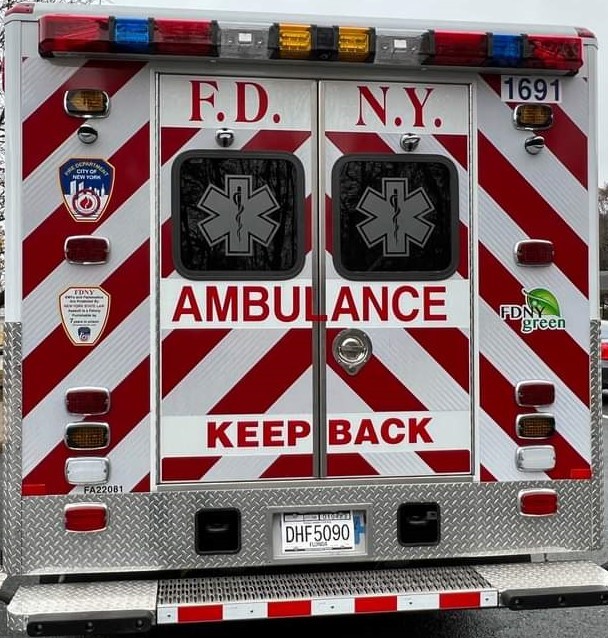
1 The FDNY operates a fleet of more than 700 ambulances. Most of these vehicles are equipped with IRT. (Photos by author.)
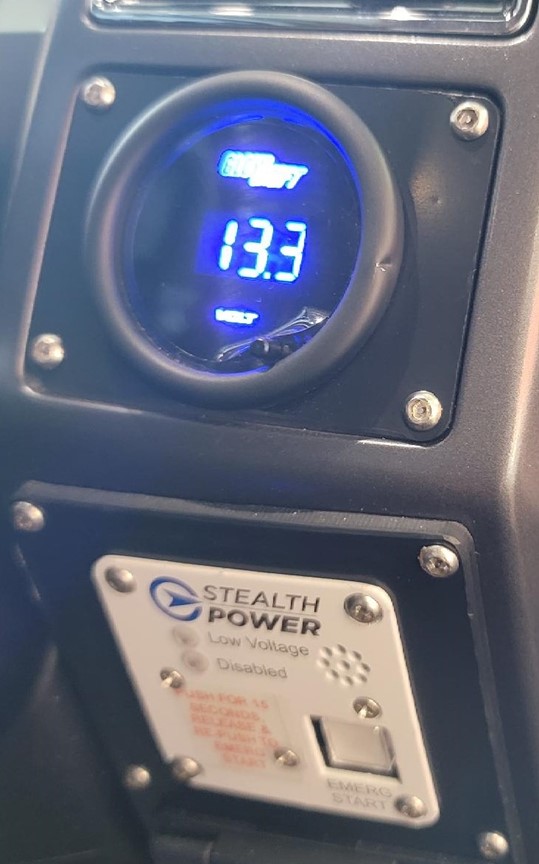
2 The auxiliary power unit also provides an emergency jump-start feature.

3 Some of the APU components within a vehicle’s electrical compartment. In addition to idle reduction, all vehicles also have shore power charging.
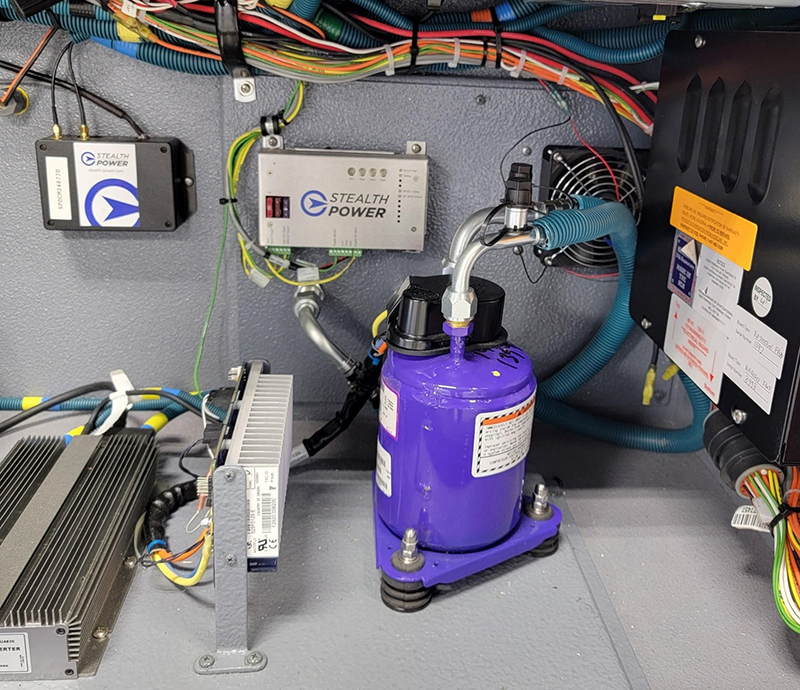
4 The APUs provide heat and air conditioning while operating on the battery system.
So, let’s take a look at idle reduction technology, where it is today, and how it can help bridge the gap between the push to promote electric vehicles (EV) and our huge investment with internal combustion engine (ICE) vehicles.
There are several different types of idle reduction technologies currently available. At FDNY, we use a combination of systems to achieve our objectives.
Stop-start systems automatically shut off the engine when the vehicle comes to a stop and idles for a predetermined amount of time, then restarts the engine when the driver is ready to continue driving. This is similar to hybrid vehicle technology available in many commercially manufactured automobiles currently on the market. This technology has not yet taken hold in the emergency vehicle market.
Shore power is commonly used in over-the-road trucks. Shore power enables parked trucks to connect to landline electricity, eliminating the need for onboard generators and idling while parked. Most fire apparatus and ambulances are equipped with shore power to maintain the OEM batteries and charge onboard electrical equipment while the vehicle is parked in quarters. While this is very effective and efficient, it does not help to reduce engine idling while the vehicles are in the field.
Auxiliary power units (APUs) are compact devices installed in all types of on- and off-road vehicles. They provide power to essential systems (e.g., communications, air conditioning, heating, and electrical components) without running the vehicle’s engine, reducing the need for idling while the vehicle is parked. These are the systems that we are discussing here.
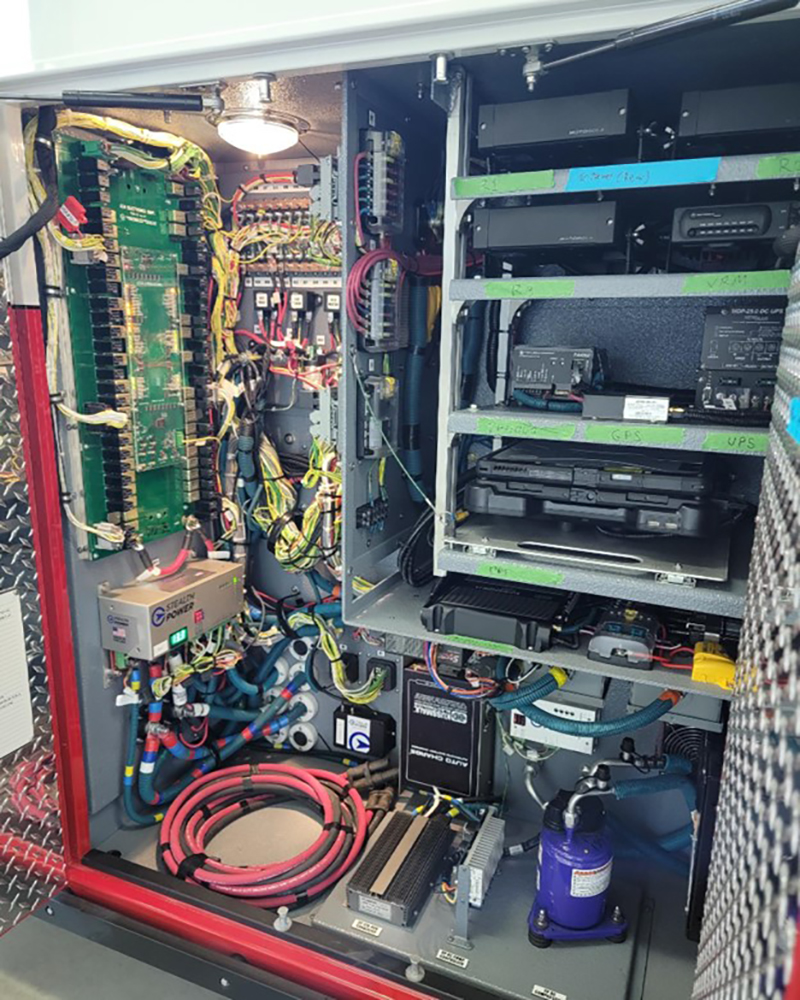
5 The FDNY uses a separate electrical/radio compartment to secure sensitive circuitry and equipment, including the APU.
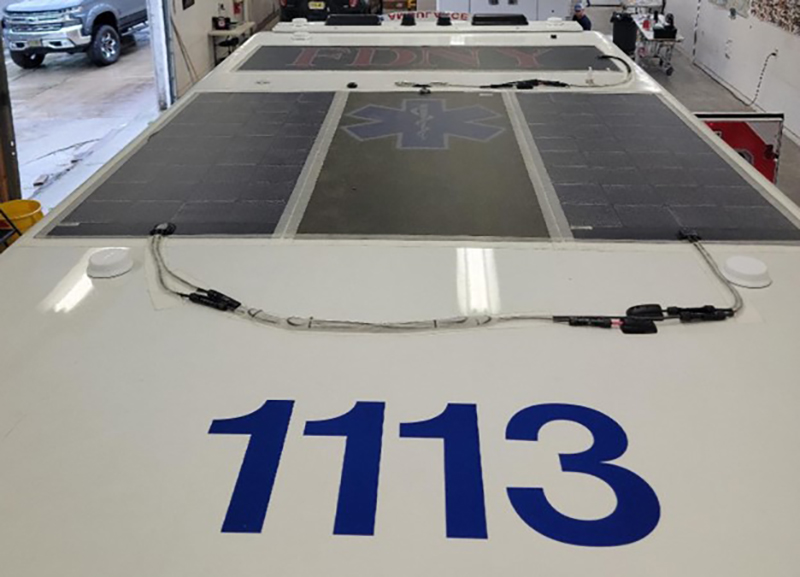
6 Solar panels on the roof of the ambulance charge both the APU batteries as well as the vehicle’s OEM batteries.
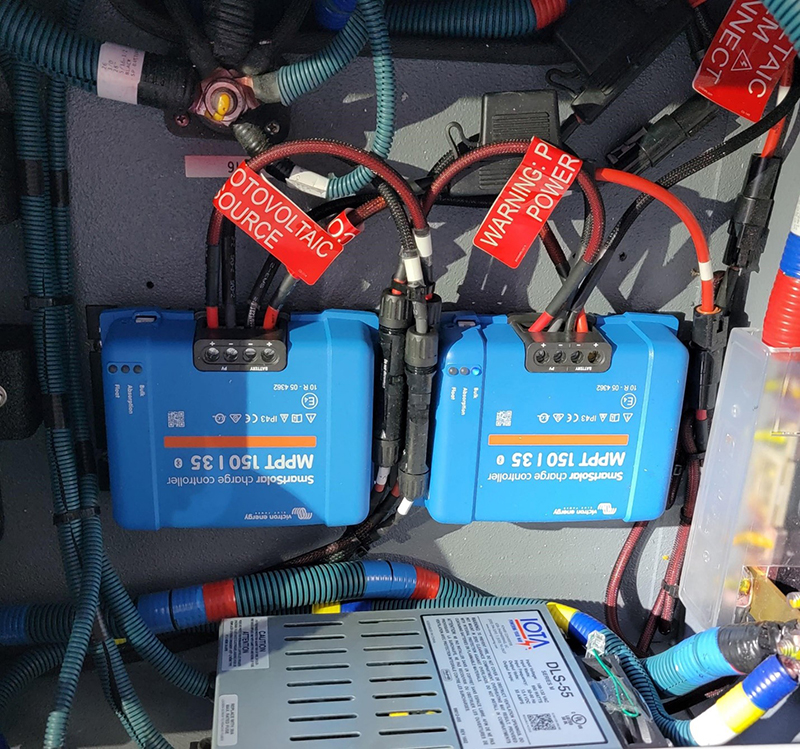
7 Control modules within the vehicle distribute the energy gathered by the solar panels to the systems in the vehicle.
THE FDNY SOLUTION
Currently, the FDNY uses an APU with stop-start technology and solar-panel-assisted charging on its ambulances. EMS supervisor vehicles are being equipped with a smaller APU without solar. There is also a pilot program planned to introduce the systems into the FDNY’s fleet of pumpers.
When a vehicle is placed in park (or the maxi-brake is set), the diesel engine shuts off automatically after a minute, and the APU battery system picks up the load of the predetermined components. In our ambulances, we provide electrical power for heat, air conditioning, radios, MDTs, patient/equipment compartment HVAC, interior lighting, and some additional necessary components. Based on outdoor ambient temperature and the components that are being used, we see run time on the systems of two to six hours.
Since the start of this project 10 years ago, we have made numerous adjustments to the system to gain greater run time and more effective use. One improvement is adding solar panels on the vehicles. We are currently running more than 100 ambulances with the solar enhancement. Since our ambulances are almost always on the road, we rarely get to plug them in to shore power. Because of this, we rely totally on the vehicle’s alternator to charge the APU’s batteries. The large-output Ford alternator does a pretty good job of this and generally gets us to 75% to 90% capacity on the APU cells. The solar gets us the additional portion that we would not otherwise get.
An added benefit to the solar is that it also operates as a trickle charger for the truck’s OEM batteries. Quite often, ambulances that are parked as spares or sidelined for maintenance will be parked for a week or longer. This solar charging advantage ensures that the vehicles’ batteries are topped off while they sit idle.
As battery technology advances, our systems will continue to evolve and improve. Idle reduction technology is a logical step toward creating a greener, more sustainable future.
While some fleets begin their transitions to EV, most cannot afford this change, and the infrastructure to support a mass transition is yet to exist. Additionally, particularly in emergency services and utilities, this technology is just not yet viable. Although electric vehicles are coming on the market as fire apparatus and ambulances, their range limitations prevent them from being truly standalone.
Because of this, idle reduction technology remains a crucial steppingstone between traditional ICEs and fully electric vehicles. As we continue to explore ways to mitigate the impacts of transportation on the planet, idle reduction technology stands as a promising pathway toward a cleaner and more efficient automotive industry.
MARK ARONBERG is assistant fire commissioner (ret.) for the Fire Department—City of New York.

